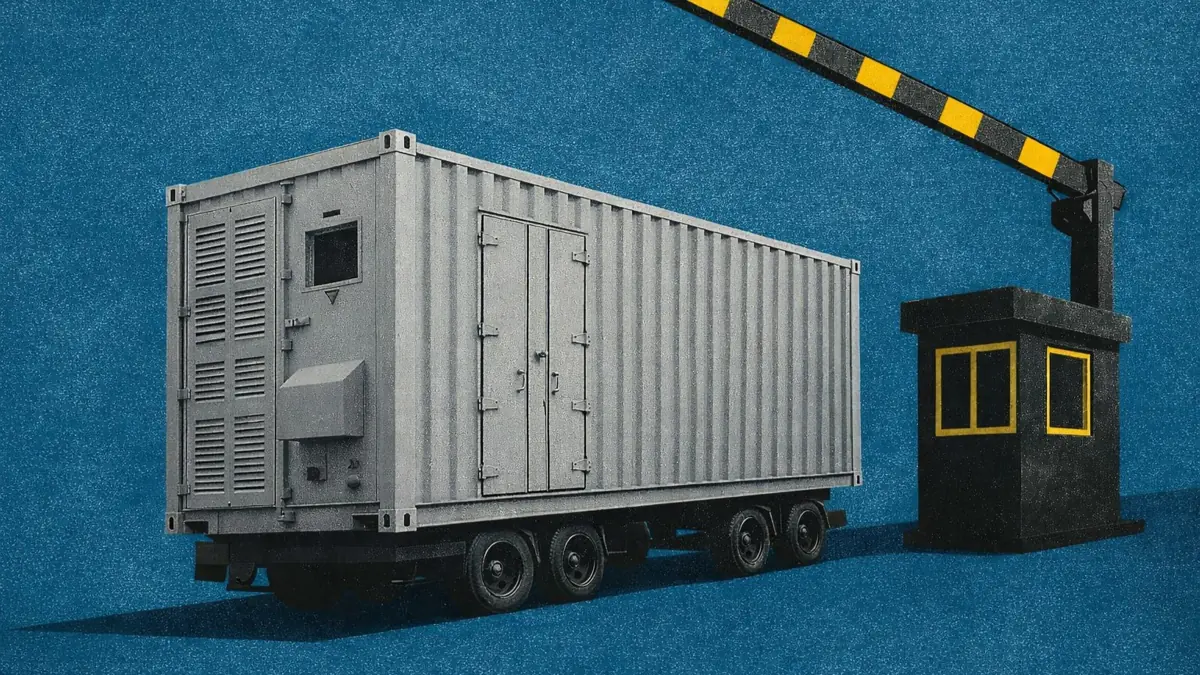NYISO’s Ancillary Services: A Beginner’s Guide
Ancillary Services support the stable operation of the electric grid and can provide a valuable revenue stream for the resources that supply them. NYISO procures two types of Ancillary Services through wholesale markets:
- Regulation & Frequency Response Services which continuously maintain a grid frequency of 60 Hz, and
- Operating Reserve Services which provide back-up generation or demand response in the event of a sudden loss of generation or transmission (known as a “contingency”).
NYISO sources these services through four products. One product provides Regulation Services, the remaining three products provide Reserve Services.

There are other services such as Voltage Support and Black Start Capability which help maintain desired voltage levels or restore the grid after a blackout. However, NYISO doesn’t procure these services through wholesale markets and only awards them to a small subset of resources.
Resources must meet eligibility criteria in order to offer into Ancillary Service markets
Resources planning to participate in Ancillary Service markets must meet criteria specified by NYISO.
NYISO only awards Regulation to fast-responding resources that can automatically adjust their output in either direction in real time. Resources must be able to receive and respond to Automatic Generation Control signals every 6 seconds and provide telemetered output data at the same interval. They must also prove this capability in a pre-qualification test.
For Reserve products, eligibility depends on whether a resource is online and how quickly it can respond after a contingency:
- 10-Minute Spinning Reserves are sourced from resources that are already online and can increase output within 10 minutes.
- 10-Minute Non-Spinning Reserves are sourced from offline resources that can start and ramp to required output within 10 minutes.
- 30-Minute Reserves are sourced from online or offline resources that can reach required output within 30 minutes.
Additionally, eligibility for any of the four products requires resources to maintain available capacity equal to their awarded quantity for the duration of their awarded interval. They must avoid simultaneous commitments to conflicting services without NYISO-approved co-optimization.

Battery energy storage resources are eligible to provide all four products. Their fast, precise, bidirectional response capabilities makes them especially well suited for these awards. The main constraint to participation is each battery’s state of charge and any overlapping commitments they may have.
NYISO’s Regulation requirement peaks during morning net load ramps
NYISO procures Reserves and Regulation up to a defined “requirement”. These requirements represent the estimated megawatts of capacity needed to maintain grid reliability and serve as the market size for each product.
The Regulation requirement is a system-wide quantity that varies seasonally and throughout the day. Since the purpose of Regulation is to correct system frequency variations, the requirement rises during high-variability periods and falls during stable ones.
NYISO identifies high-variability periods by analyzing 5-minute changes in net load - defined as total system load minus wind and solar generation. This approach captures how fluctuations in renewable output and load ramps drive Regulation needs.
As a result, Regulation requirements rise during hours and seasons with greater net load volatility, such as morning and evening ramps or afternoons with large solar swings.
Conversely, during periods of stable load and renewable generation - such as overnight hours or winter days - the Regulation requirement can fall to less than half of peak levels.
Reserve requirements are highest in South-Eastern New York
Unlike Regulation’s system-wide requirement, Operating Reserve requirements vary by location, with only minor changes for time of day or weather alerts. This locational variation reflects transmission constraints and load concentrations, which create the need for locally sourced Reserves that can respond within each region.
As a system-wide baseline, NYISO sets Reserve requirements based on its largest single potential contingency. In 2025, this is a 1,310 MW contingency.
- 10-Minute Spinning Reserves must equal half of this contingency (655 MW).
- Total 10-Minute Reserves must equal the full contingency (1,310 MW).
- Total Reserves must equal twice the contingency (2,620 MW).
It should be noted that smaller reserve requirements are nested within larger ones. For example, the resources that contribute toward the 10-Minute Spinning Reserve requirement will also contribute to the total 10-Minute Reserve requirement and the total Reserve requirement.
On top of this baseline, NYISO adds local reliability needs that raise requirements in the following nested localities:
- East NY (Zones F–K)
- Southeast NY (Zones G–K)
- New York City (Zone J)
- Long Island (Zone K)
The East and Southeast NY zones face transmission constraints that can limit Reserve deliverability from upstate. Meanwhile, New York City and Long Island are load-dense and import-limited, requiring additional Reserves to maintain reliability.
In contrast, upstate zones with strong export capability carry lower local requirements and instead contribute to system-wide Reserves, supporting reliability across the state.
Reserve prices are product- and location-dependent while Regulation prices depend on system-wide bids
Reserve requirements drive Reserve clearing prices - the most in-demand products and highest requirement locations have the highest prices.
As noted above, NYISO sets three Reserve requirements: 10-Minute Spinning Reserves, total 10-Minute Reserves, and total Reserves. This structure creates a premium for the 10-Minute Spinning Reserve product - which contribute to all three requirements - over 30-Minute Reserves, which contribute only to the total Reserve requirement.
Additionally, Reserves sold in New York City - where requirements are highest - can clear at more than double the prices seen in Upstate New York, which only faces baseline requirements.
This price hierarchy holds in both Day-Ahead and Real-Time markets, though Real-Time prices are far more volatile as NYISO responds to immediate system needs.
Consistent with its system-wide requirement, the Regulation clearing price is uniform across NYISO. This clearing price is co-optimized between the two components of Regulation bids:
- Regulation Capacity Bid ($/MW): the price a resource offers to reserve MWs for Regulation
- Regulation Movement Bid ($/MW): the price a resource offers for each MW deployed for Regulation by NYISO
Once the clearing price is set by these bids, each resource’s Regulation payment is adjusted to include a performance factor. This is a coefficient that rewards accuracy and responsiveness rather than just availability.
In other markets such as PJM, Regulation is considerably higher priced than Reserves. However, this is not the case in NYISO. During some months, downstate Reserve prices have actually surpassed Regulation prices.
The Ancillary Services market will grow and present new opportunities to batteries with the creation of Uncertainty Reserves and the ISC
Ancillary services often serve as the primary revenue source in the early stages of energy storage markets.
Over time, however, new entrants increase competition and drive prices down, causing Ancillary Service markets to saturate. This dynamic has already played out in CAISO and ERCOT and will emerge in PJM over the coming years.
However, two NYISO-specific policy developments are likely to impact the future of battery participation in NYISO’s Ancillary Service markets:
- Saturation will likely be delayed by recent regulatory changes that expand Reserve requirements. In July 2025, the Federal Energy Regulatory Commission (FERC) approved new rules introducing “Uncertainty Reserves” next year. This is an increase in operating Reserve requirements designed to cover forecast errors in load, wind, and solar generation. This new requirement will be determined using historical forecast data to ensure sufficient capacity is available to manage real-time deviations.
- The Index Storage Credit (ISC) Program will create additional benefits to batteries in Ancillary Service markets. This program supplements battery revenues based on a zonal Reference Price, with projects that outperform this benchmark earning additional upside. The Reference Price reflects each zone’s energy arbitrage potential and capacity prices, but excludes Ancillary Service revenues from its calculation. This means projects can earn ISC upside in addition to their Ancillary Service earnings, rather than one offsetting the other. Batteries can stack ISC payments on top of regulation or reserve revenues for potentially elevated returns.
Together, these policy shifts will create a temporary window of outsized returns for Ancillary Service participation in NYISO. However, as participation increases, competition will still intensify and Ancillary Service markets will ultimately face the same saturation seen elsewhere.







